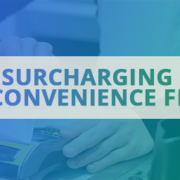The Ultimate Guide to Virtual Terminals: Convenient, Secure, and Cost-Effective Remote Payment Processing
Advantages of Virtual Terminals for Remote Payment Processing
Convenience and Accessibility
Virtual terminals have revolutionized the way businesses process payments remotely. These web-based tools offer numerous advantages compared to traditional point of sale (POS) systems, making them an attractive option for businesses of all sizes. Let’s explore the key benefits of using virtual terminals for remote payment processing.
Virtual terminals eliminate the need for physical payment terminal hardware, allowing businesses to accept payments from anywhere with an internet connection.Transactions can be processed from any computer, making it convenient for businesses with remote teams or multiple locations. Payments can be accepted over the phone, via email, or other remote solutions, providing flexibility and convenience for both businesses and customers. Additionally, virtual terminals enable businesses to streamline the payment process for sales through mail orders, telephone orders, and off-site sales events, simplifying the overall payment experience. Invoices can be generated, and credit card payments can be accepted through secure links, creating a seamless payment process for customers.
For example, a small online clothing boutique can benefit from using a virtual terminal. The boutique can easily process payments from customers who place orders over the phone or through email. With a virtual terminal, the boutique can generate invoices and securely accept credit card payments, providing a convenient and hassle-free payment experience for their customers.
Improved Customer Experience
A positive customer experience is crucial for any business, and virtual terminals contribute to enhancing that experience. Virtual terminals offer easy payment acceptance, recurring payment setup, and secure customer data storage. The quick and easy payment processing provided by virtual terminals improves overall customer satisfaction. Customers appreciate the simplified payment process, which eliminates the need for manual data entry and reduces friction during the transaction. With virtual terminals, businesses can provide a convenient and efficient way for customers to make payments remotely, enhancing the overall customer experience.
For instance, a subscription-based business can benefit from using a virtual terminal to process recurring payments. Customers can set up automatic payments, eliminating the need for them to remember to make payments each month. This not only improves the convenience for customers but also reduces the chances of missed payments for the business, resulting in a smoother and more satisfying customer experience.
Cost-Effectiveness and Efficiency
Virtual terminals provide cost-effective and efficient solutions for businesses compared to traditional POS systems. They eliminate the need for additional hardware or programming, resulting in cost savings for businesses. Businesses can avoid the expenses associated with physical payment terminal hardware and maintenance. The efficient payment processing offered by virtual terminals saves time for businesses and allows them to focus on other core aspects of their operations. With virtual terminals, businesses can process payments more efficiently and effectively, resulting in improved productivity and cost savings.
For example, a small business that operates primarily through mail orders can benefit from using a virtual terminal. By eliminating the need for physical payment terminal hardware, the business can save on upfront costs and ongoing maintenance expenses. The streamlined payment process offered by virtual terminals also saves time for the business, allowing them to focus on fulfilling orders and providing excellent customer service.
Security Measures
Security is a top priority when it comes to payment processing, and virtual terminals offer robust security measures to protect sensitive customer data. Virtual terminals provide encryption, tokenization, and PCI compliance to ensure secure transactions. They utilize blockchain technology and tokenization to protect customer information, minimizing the risk of data breaches or unauthorized access. With fraud detection and user access controls in place, virtual terminals provide a secure environment for processing payments remotely. When choosing a virtual terminal provider, businesses should prioritize security to ensure the protection of customer data.
For instance, a medical practice that handles sensitive patient information can benefit from using a virtual terminal that offers robust security measures. By choosing a virtual terminal provider that prioritizes encryption, tokenization, and PCI compliance, the medical practice can ensure that patient data remains secure during the payment process. This provides peace of mind for both the medical practice and their patients, knowing that their sensitive information is protected.
Integration and Additional Features
Virtual terminals seamlessly integrate with other systems and existing payment infrastructure, making them a versatile payment processing solution. They offer payment and follow-up automation, detailed analytics, and support for various payment methods. Businesses can benefit from features such as daily fund transfers, downloadable reports, and options for recurring or multiple payments. Integrating virtual terminals with shopping carts and other business tools enhances efficiency and provides a seamless payment experience for customers. The additional features offered by virtual terminals enhance the functionality and convenience of payment processing, allowing businesses to optimize their operations.
For example, an e-commerce business can benefit from using a virtual terminal that integrates with their existing shopping cart software. By integrating the virtual terminal with their shopping cart, the business can provide a seamless payment experience for customers. Customers can complete their purchase without being redirected to a separate payment page, improving the overall user experience and increasing the likelihood of successful transactions.
Payment Processing Software for Small Businesses
Payment processing software is essential for small businesses to accept digital payments. Virtual terminals offer a cost-effective solution for small businesses. They simplify payment processing for small businesses operating through mail and telephone orders. Virtual terminals provide a secure and convenient payment method for small businesses, allowing them to offer a seamless payment experience to their customers. By utilizing virtual terminals, small businesses can enhance their efficiency and professionalism in handling transactions.
For instance, a small bakery that primarily takes orders over the phone can benefit from using a virtual terminal. With a virtual terminal, the bakery can easily process credit card payments over the phone, eliminating the need for customers to visit the physical store to make a payment. This not only improves convenience for customers but also allows the bakery to expand its customer base beyond the local area.
Conclusion
In conclusion, virtual terminals offer significant advantages for businesses looking to process payments remotely. Their convenience, accessibility, improved customer experience, cost-effectiveness, and security make them an attractive option for businesses of all sizes. Virtual terminals eliminate the need for physical payment terminal hardware, providing businesses with the flexibility to accept payments from anywhere with an internet connection. The streamlined payment process enhances the overall customer experience, making it quick and convenient for customers to make payments remotely. Furthermore, virtual terminals offer cost savings, efficiency improvements, and robust security measures. By seamlessly integrating with existing systems and offering additional features, virtual terminals provide businesses with a comprehensive payment processing solution. Overall, virtual terminals are a reliable and efficient tool for businesses to process payments remotely, enabling them to provide a seamless payment experience for their customers.





